Photo
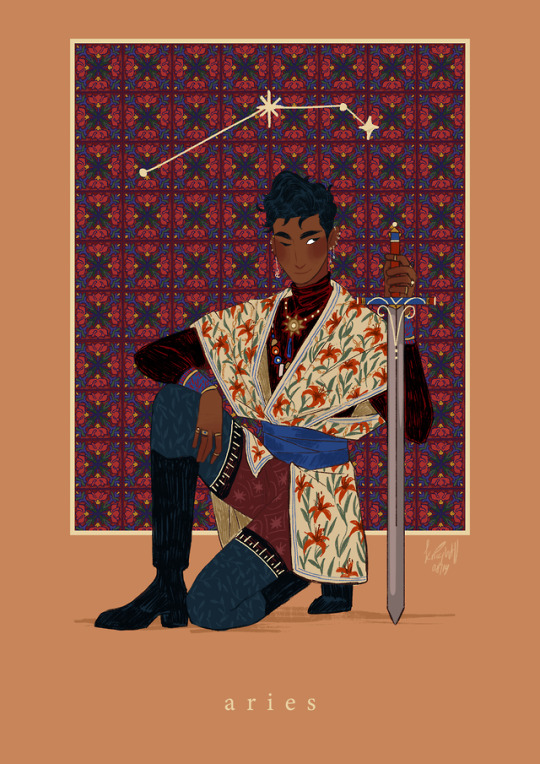
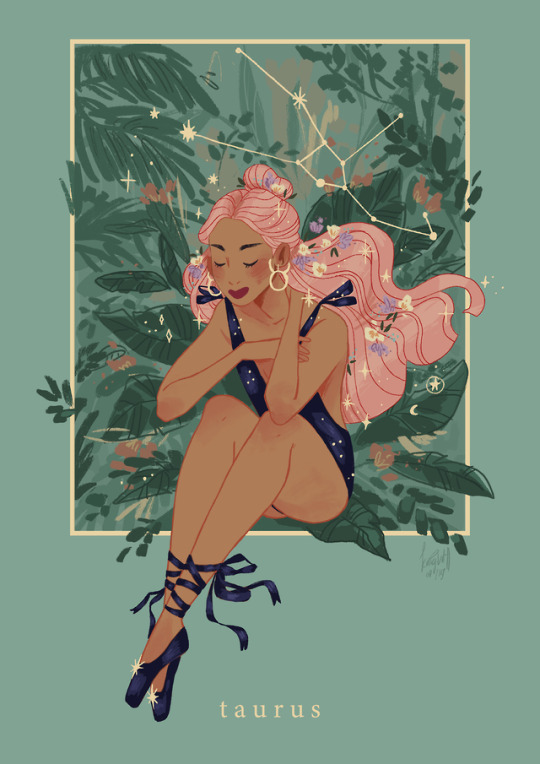




✨💫🌟T H E Z O D I A C 🌟💫✨
[Part 2] ⭐️[Individual signs]
8K notes
·
View notes
Photo
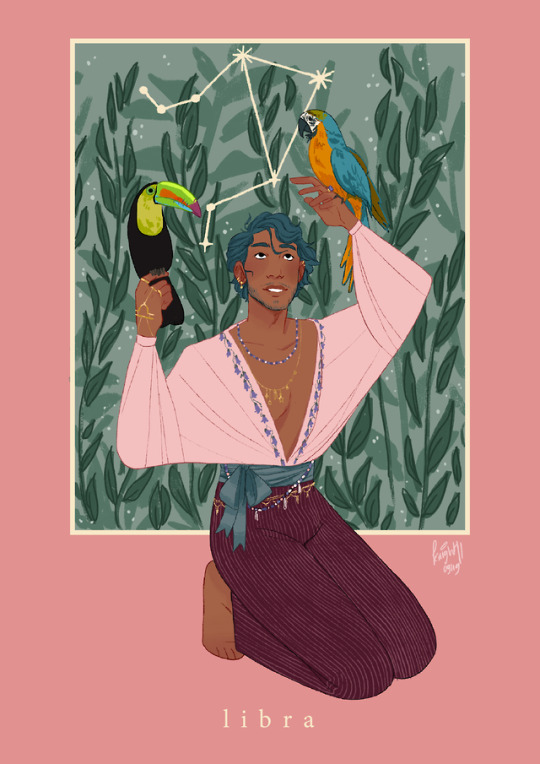


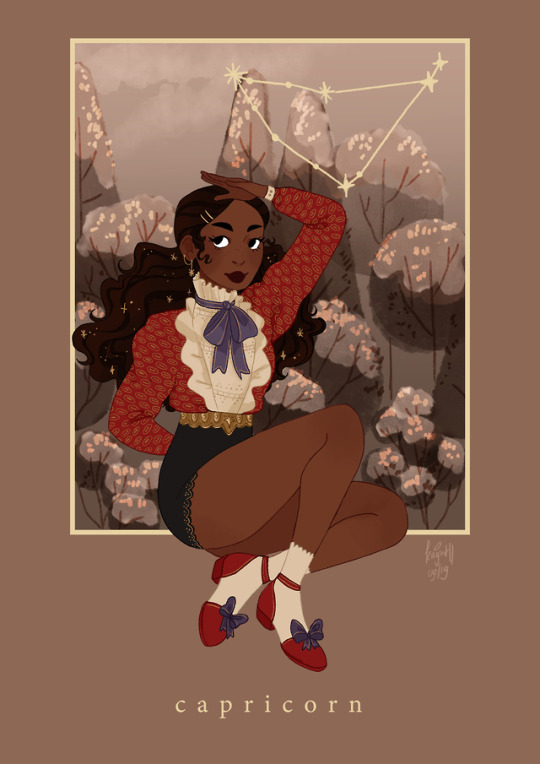
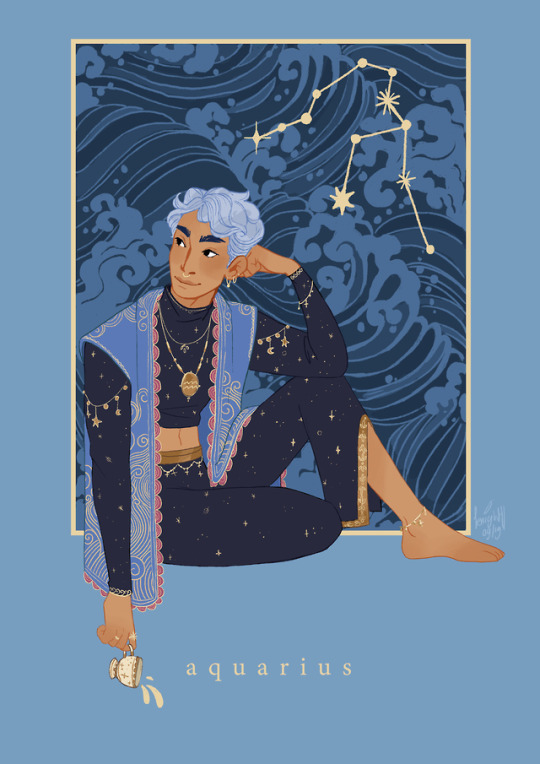
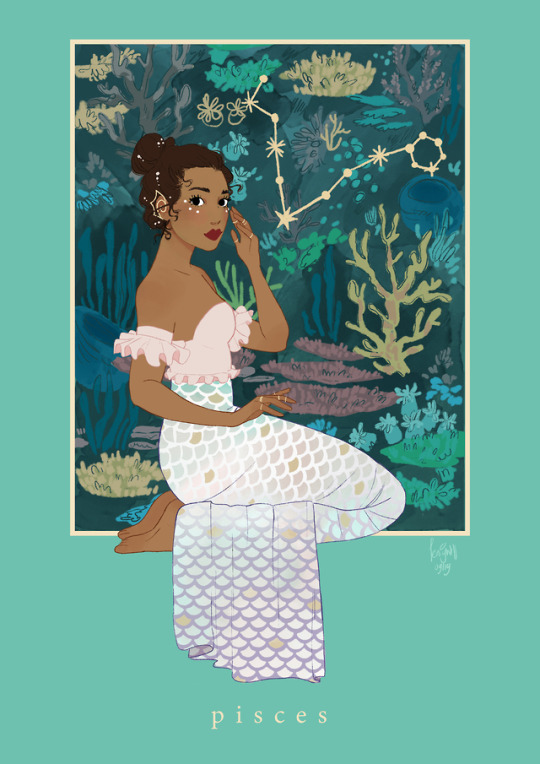
✨💫🌟T H E Z O D I A C 🌟💫✨
[Part 1] ⭐️[Individual signs]
8K notes
·
View notes
Photo

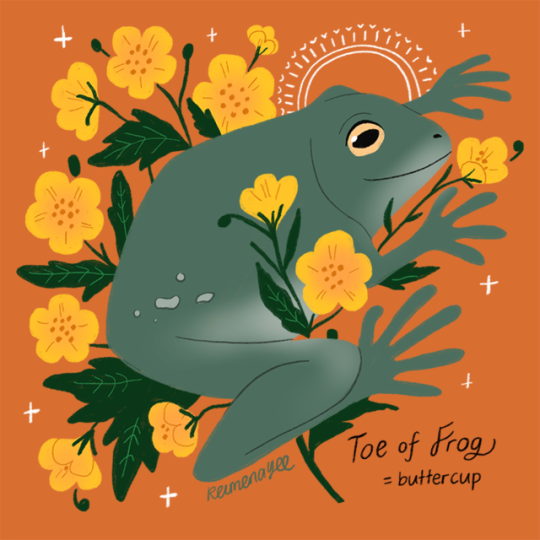


Double, double toil and trouble;
Fire burn and caldron bubble.
Fillet of a fenny snake,
In the caldron boil and bake;
Eye of newt and toe of frog,
Wool of bat and tongue of dog.
Witch’s Brew series. These animal parts actually refer to plants!
<<Buy prints and merch @ straungewunder shop>>
18K notes
·
View notes
Text
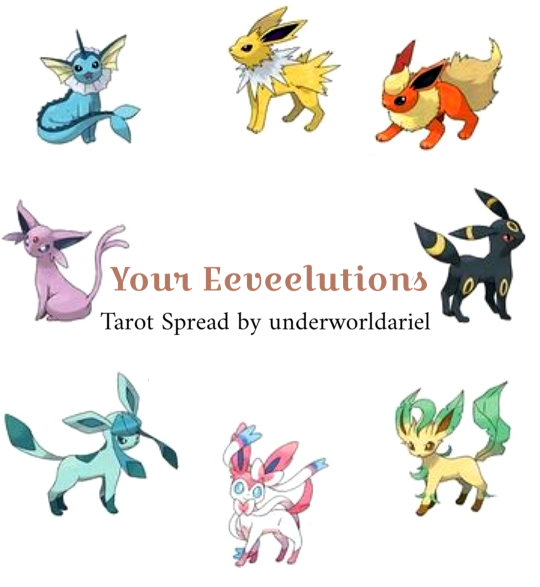
Your Eeveelutions Tarot Spread
Hello, sweetpeas and beansprouts!
A lovely follower of mine was talking with me about pop culture witchcraft, and I started thinking about the examples I’ve seen of Sailor Moon and things, and then I suddenly thought: Eeveelution Tarot. And I had to make it.
This spread uses the eeveelutions to explore different aspects of you, who you are, what you have, and what you may need to hear.
The layout is exactly like the wheel above with a normal ‘Eevee card’ in the middle.
Eevee: You currently
Jolteon: What sparks your energy and revitalises you?
Flareon: What inspires your drive and ignites your passions?
Umbreon: What’s your shadow side, the part no one sees?
Leafeon: How are you growing and blossoming?
Sylveon: What is your magic talent on earth?
Glaceon: What is something you need to ice out and let go of?
Espeon: What is something you know in your mind, an innate fact of yourself?
Vaporeon: What is something powerfully fluid about you, that adapts like water with the power of a mertail?
I hope this spread really comes to help someone discover who they are 💙
1K notes
·
View notes
Text
Who else loves making spell bottles but can’t find easy items for what I want it to do?
Well y’all are in luck cause I got annoyed and so I made a list of commonly found kitchen items that have properties that are often desired for spell bottles!
~please note that other items that you may have also have these properties but I wanted to make something very generic~
Courage- Thyme
Luck- Clove, Clover, Dill, Hazel, Mint, Orange
Protection- Clove, Clover, Basil, Cinnamon, Cumin, Fennel, Garlic, Grass, Lettuce, Lime, Olive, Onion, Parsley, Pepper, Radish, Rosemary, Sage
Love- Clove, Clover, Orange, Basil, Cinnamon, Ginger, Jasmine, Lemon, Lettuce, Lime, Parsley, Peach, Pear, Pineapple, Rosemary, Thyme, Vanilla
Success- Clove, Clover, Cinnamon, Ginger
Money/Riches/Wealth- Dill, Mint, Orange, Ginger, Jasmine, Oats, Onion, Pecan, Pineapple, Basil
Health- Thyme
Wishes- Hazel, Peach, Sage
Healing- Mint, Fennel, Garlic, Lime, Olive, Onion, Rosemary, Thyme
Travel- Mint
Anti-theft- Garlic
Power- Ginger
Longevity- Lemon, Peach, Sage
Friendship- Lemon
Purification- Fennel, Lemon, Parsley, Thyme
Sleep- Lettuce, Rosemary, Thyme
Fertility- Olive
Potency- Olive
Lust- Olive, Pear, Radish, Rosemary, Vanilla
Employment- Pecan
Youth- Rosemary
Immortality- Sage
Wisdom- Sage
12K notes
·
View notes
Text
My Favorite Witch Tips
Use concealer/foundation to draw sigils on your face, use beauty blender or brush to blend it in to charge it.
Bay leaves between your bottom sheet & your mattress for good luck while you sleep!
Quartz is sold at hardware stores at the, “Garden Section.”
Make cheap runes with sharpies, clear nail polish, and small smooth rocks.
Incense ashes= black salt
Place a pine needle branch above your bed to keep illnesses away
The # of crows corresponds to the future (look this up, it’s very interesting)
Thrift stores, farmers markets, and dollar stores > metaphysical stores
Pop culture spells are easy to say with pizazz, consider putting song lyrics in your spells.
2K notes
·
View notes
Text
Tarot trick:
When stuck between two choices/options,
First, shuffle/mix up the deck as you normally would before a reading.
Find the HANGED MAN card…
The card above it in the deck and the card below it in the deck represent each choice/option and how they truly are.
(Do not reshuffle)
Then, find the JUDGMENT card.
The card above it in the deck is your advice to follow when choosing, what to remember.
The card below it in the deck shows what to avoid, what to be aware of.
4K notes
·
View notes
Text
Employment Emoji Spell
🔮⭐️✒️🌟🏆💷🔐🔑💸⭐️🔮
‘I will unlock my opportunities and my potential. I will be employed.’
Like or reblog to cast for yourself!
3K notes
·
View notes
Text
Faerie List
Alvens: These are Water faeries who float around on bubbles and hate fish. During a full moon, they come on land to dance and play. They are not particularly friendly.
Amadan Dubh: This is a particularly dangerous type of faery that is greatly feared among the Gaels. They are known as the “fairy fools,” and the bringers of madness and oblivion. They play faery enchantments on their reed pipes on hilly slopes and precipices after sunset.
Banshee: The name “banshee” means a woman of the faery. It corresponds to the “Fear Sidhe” or faery man. The wild banshee wanders through the woods and over the moors at dusk, and some- times lures travelers to their death. Banshee can also travel at will to great distances. Appearing in tattered gray clothes, they are basically a sociable faeries who have become solitary through sadness and grief. They are the honor- able ancestral faery women of the old clans of Ireland, who are heard, but rarely seen. They wail a blood-curdling lament just before mis- fortune, illness, or death occurs in their ancestral families. Their wail can kill or instantly age mortals who hear it. Banshee also avenge the death of their descendants. They generally appear either as beautiful maidens or gruesome crones. Salt water and silver can harm them.
Bendith Y Mamau: They have the ill disposition and ugly appearance of goblins, but the glamour of the faeries. Living in underground caverns, they don’t care very much for mortals and they have been know to steal cattle and children, to kill farm animals, and to break important tools.
Billy Blin: A household familiar who is popularized in English and Scottish songs.
Boggart: They are known for breaking things and making trouble, but seldom do serious harm. Most old homes have a boggart. The supernatural boggart is sly, annoying, mischievous, and a prankster. They pull the covers from sleeping mortals, rap or pound on the door at odd times, or rearrange the furniture at night when you are sleeping.
Brownie: They are from 1 to 2 ft. tall and are scattered throughout the highlands and lowlands of Scotland as well as the northern counties of England. They have brown, wizened faces and hair growing all over their body, so they don’t need to wear clothes (although sometimes they are seen wearing brown cloaks with hoods). As household faeries, they do unfinished jobs such as mowing, threshing, caring for the laying hens, and tending the sheep and cattle. They bring good luck to a family, providing that the family treats the brownie well. Brownies also love animals and will take care of the household pets. They adore gifts of food and drink such as milk and honey cakes, but abhor gifts and wages. Urisks are the Scottish version of brownies.
Buccas: Residing in Cornwall, they are magickal beings that inhabit mines. Also called tinmine demons, they are the wind goblins that foretell shipwrecks.
Bwca: This is a sort of Welsh version of a brownie, but a more particular one. They can be great help around the house, but if offended they can become harmful, throwing things around the house, spoiling the milk, and ruining the beer.
Callicantzaroi: Naked, they ride about on chickens. They live in troops and are zealous in their celebrations of Yule.
Clim: A mischievous goblin that resides in chimneys and peeks out at children, scolding them when they are bad.
Clurichaun: Residing in southwest Ireland, they are renowned drunkards who both guard and raid wine cellars. The Clurichaun sing in Gaelic and have beautiful, magickal voices.
Coomlaen: These “elven steeds” appear as tall, thin, white or silvery horses who live in the forest and are always in the company of elves. As shapeshifters, the coomlaen can take the shape of their de- sires, but must return to the shape of a horse once during each day for at least six hours. They are fiercely devoted to one rider at a time and the bond lasts for the lifetime of the rider. The two communicate telepathically. Because the Coomlaen defends its rider, in order to befriend a coomlaen you must first befriend its rider. Coomlaens adore gifts of apples and honeysuckle. Iron is harmful to the coomlaen.
Cooshie: Also known as the “elfin hound,” they live in the forest and appear as large, silver-furred wolves that move quickly with the grace of a large cat. The cooshie stay with their elfin masters, and have heightened senses, including knowing when there is any magickal, spiritual, or physical presence in their territory. Like elves and coomlaens, they have an aversion to iron. Cooshies can heal sick or injured travelers and calm troubled minds and hearts.
Corrigans: From Brittany and Cornwall, they live in the woods, near streams. Corrigans are winged faeries who like to play pranks, such as taking human babies and replacing them with changelings.
Daoine Sidhe: The immortal polytheistic group of goddesses and gods of Pagan Ireland who merged with the land, these are the cream of the crop of faeries that form a faery nation. They appear in human form, dressed in green, and are called the peaceful faeries. They preside over the faery kingdom, play sweet music, dance, ride milk-white faery horses, and are generally accompanied by their faery hounds.
Dryad: They are happy, friendly, and playful wood nymphs who live in and take care of the trees. They are born of the same seed as the place they live. Dryads are the color of tree bark or leaves and their dark green hair is extremely long and flows about them. They can disappear by stepping into a tree, as if stepping into a dimensional door. Sometimes their skin is dappled like a tree trunk. Dryads are usually very charm- ing, sing beautifully, and particularly like willow and oak trees. Damaging a dryad’s tree harms the dryad as well, but the dryad can defend its tree by creating storms and lightning.
Dwarfs: Both male and female, dwarfs are usually from 3 to 5 ft. tall, with broad shoulders, large muscles, long arms, stumpy legs, and lots of facial hair. They are quick tempered, loyal, and immune to physical damage. Working with Earth, Fire, and stone, they are found underground under moun- tains and hills where they mine metals and gems, especially copper. Their craftsmanship is unmatched in the mortal world. They adore gifts of both precious metals and gems.
Eash Uisge: They are the Highland water horses known for being fierce and dangerous. They have the ability to shift into the shape of young, hand- some men.
Elves: According to Norse mythology, elves and dwarves are created in the time before humans from the body of Ymir, the giant. Inhabiting one of the upper worlds, and often found in Natural settings such as woodlands and forests, elves are somewhere between mortal and divine. Originally between 5 and 7 ft. tall, they were thin, strong, flexible, and quick. Their hair was usually red, blond, or light brown, and they had cat-like ears. Their cat-like eyes are green, blue, silver, or gold with slitted pupils. Through time, the elves became Elemental spirits of the land, sea, and forest, who are sometimes por- trayed as small, good-natured creatures with brown skin and delicate features. Iron does not kill elves, but it can injure them. They adore gifts of quartz crystal, pearl, moonstone, and silver. In the Western world, Santa Claus and his helpers are elves.
Ferrishyn: The Manx name for the faeries, also known as the “sleigh beggey.”
Fir Dearg: Also known as the “fear darrig” or the “red men,” they are a mischievous, rare breed of faery, who dress in red and have red hair. Their only interest seems to revolve around playing practical jokes on humans.
Ganconer (Gean-canogh): Also known as a love faery, the ganconer is a leprechaun-type faery who appears as an incredibly handsome young male. Called the “lover-talker,” he spends most of his time seducing milkmaids and shepherdesses. Appearing in lonely valleys and fields, they are known for playing beautiful songs on their pipes, but their fate is ultimately to be alone.
Gnomes: They are elderly dwarf people who stand from 1 to 2 ft. tall, and like dwarfs, live under- ground except for the few times when they come up to roam in the deep forest. Male gnomes grow long beards. Gnomes live under old oak trees in heavily forested areas, and like gifts of beautiful stones.
Gray Elves: Not choosing to associate with any other magickal beings, they live in isolated meadow- land. Gray elves have either silver hair and amber eyes, or pale, golden hair and violet eyes. They are very intelligent and extremely rare.
Gwartheg Y Llyn: The Welsh name for faery cattle, said to be usually milk-white in color. A farmer who gained the favor of this magickal cow was said to be richly rewarded, but the farmer who tried to lift a hand to hurt the animal would find misfortune would come to the farmer.
Gwradedd Annwn: The Welsh name for the “lake maidens,” they are beautiful and desirable, but are not like sirens and nixies. They are known for marry- ing mortals much like the Silkee or “seal maidens.”
Hobgoblins: They are the English cousins to the Scottish brownie and Welsh bwca. A house faery, a hobgoblin’s favorite place is behind the kitchen fire, once known as a “hob.” Once settled, they rarely leave the house, and when feeling ne- glected, they are known to hide keys in the most unlikely places. They are vulnerable to iron and gold. In folklore and literature, both Robin Goodfellow and Puck are hobgoblins.
Knockers: In Cornwall, they are generally helpful mine sprites that are particularly attracted to rich veins of ore. Miners of old were said to follow the sound of the knockers’ tools pounding the rocks to find a strike. Knockers are also known to warn against cave-ins and floods, and as such, the miners always leave them gifts of food and drink. In Wales, knockers are known as “coblynau.”
Kobold: The German name for the “little people,” originally they were tree sprites who were captured and brought home in wooden boxes. The per- son who captured the kobold could open up the box and the kobold would do things for her or him. But if anyone else opened the box, the kobold would take revenge for being confined. They formed the basis for the original jack-in- the-box for children. They are old men the size of small children who wear pointed hoods or caps and green clothing. Loud noises and strong winds scare them. For gifts of food and milk left out at night, they will do any little job around the house and barn, such as washing the dishes, preparing meals, sweeping the floor, making the fire, or tending the farm animals. Kobolds also have the ability to cast binding spells and will go to great efforts to protect the members of the household. If mistreated, they can become truly nasty.
Leanhaun (Leanan) Sidhe: They are the faery mistresses or sweethearts of Scotland and Ireland. They crave love, and try to gain power over their lovers, treating them like slaves and draining all the life out of them before moving on to new lovers. Said to be an inspiration to poets and musicians, these magickal faeries act as sort of muses, giving the artist’s work an otherworldly quality.
Leprechauns: They usually manage to trick their way out of surrendering their gold. Only a select few get away with a leprechaun’s riches. Solitary faeries of Ireland, witty, fascinated with gold, they can pass by as a swirl of dust, knocking off your hat. They are generally 2 to 3 ft. tall, with wizened faces, bright eyes, and red noses. They dress mainly in greens and browns, and are known for their excellent shoe-making skills.
Lorilei: A solitary faery, who is beautiful and bewitching, she is known for lounging on rocky heights while singing a song of enchantment.
Lunantishee: They guard the blackthorn bushes particularly on Samhain and Beltane. If you cut a stick from the bush on either one of those days, you will suffer misfortune.
Mermaids/Merrows: They live in the airy palaces be- neath the waves. They wear red-feathered caps to swim from their underwater world to ours. If a mortal steals the cap, the merrow can’t get back home. The females are beautiful, the males are ugly with green faces and red pig noses. Both have fish tails and webbed fingers. Taking mortal lovers, their offspring are covered with scales.
Muryans: Cornish faeries, the word “muryan” means “ant.” These are faeries the size of ants, who are shapeshifters. Every time they shift shape, they get smaller, eventually getting so small, they disappear from sight.
Nixie: They are Water sprites that inhabit lakes and seldom venture onto land. Their houses are made from seaweed and are guarded by giant fish. They are known for charm spells that convince humans to do their bidding.
Nymphs: Nature spirits who evolved into faeries, they live in clear lakes, streams, and crystalline caverns. Intelligent and beautiful, they do not like intrusion, but will be friendly if approached by a good-hearted mortal. Nymphs have the power of prophecy and take mortal lovers. They are also said to be extremely hard to avoid once they have taken an interest in you, and can occasionally be dangerous if they become obsessed with you. Often traveling in pairs, nymphs are mobile, but they can also permanently align themselves with trees, rock outcroppings, mountains, rivers, and springs. They appear as young, extremely gorgeous women, who are frequently dancers, artists, and musicians. They are amorous and have insatiable sexual appetites. According to folklore, a nymph’s lifetime was the same as that of the phoenix, who outlived nine ravens, who out- lived three stags, who outlived four crows, who outlived nine generations of aged mortals.
Oakman: A wood faery who lives in oak trees, the oakman is a guardian of the animals. The familiar saying “faery folks are in old oaks” speaks of their kind. The oak is considered the tree of the dead and the abode of departed spirits. Oakmen resemble drawfs with red noses, wear red toadstool caps, and have an affinity with bluebells.
Pechs (Pehts): The name used for the faeries of the Scottish Lowland, Pechs are said to be like the feens of the Highlands and the trows of Shetland.
Phouka (Pooka): Originally deadly sea horses with glossy coats and metallic-like hooves, phoukas are now often viewed as wild, mischievous creatures who are related to the leprechaun. Phoukas can employ the shape of an animal in order to play wild pranks and kill mortals. In contrast, in some stories that are told about them, phoukas that are treated kindly are known as friendly beings that help farmers.
Piskies (Pixies, Pigsies): Found frequently in Cornwall, Devon, and Somerset, England, they stand 1 ft. high (or smaller), are slim, and wear green clothes and pointed red hats. They have blond hair and green eyes, pointed ears and chins, and turned- up noses. They can also levitate and move tiny objects from one place to another. Usually friendly, they can also be mischievous, and are known to steal horses and ride them around in circles, creating Faery Rings as they do.
Portunes: These are teeny tiny faeries that are about a finger’s length or less in size.
Redcaps: They live in castles and towers where evil deeds have been done so they can feed off the energy and create more of their own. They look like brownies, but wear caps made red by the blood of passing strangers at whom they have thrown stones.
Salamander: They are the powerful Spirit faeries of Fire because the salamander embodies the in- tuitive Element of Fire. Without the salamander, Fire would not exist. They come in all sizes and differ in appearance, but they are most often seen as being similar to a 1-ft. long lizard. They can grow larger or smaller at will. Sometimes they are seen as a ball of gold, orange, or red light. They are very devoted and quick to defend a friend. Working with the salamander helps you develop and strengthen your intuitive side.
Seelie: A good-hearted and benevolent group of faeries who glow as they ride the winds in search of humans needing help. The court of the kindly faery host is called the “Seelie Court.” “Seelie” means “blessed” in Gaelic. These benevolent faeries give gifts of bread and seed corn to the poor and pro- vide all kinds of help to their favorite mortals.
Sheoques: Appearing human-like, they live in ancient thorn bushes and faery forts that are surrounded by ditches. Also known for their bagpipe playing, they enchant and steal children, most times returning them unharmed and happy.
Shock: They appear as a horse, donkey, large dog, or calf. They are frightening and something to get away from if, by chance, you encounter one.
Sidhe: The word means “people of the faery mounds.” A distinction is often made between the “sidhe” who are seen walking on the ground after sunset, and the “Sluagh Sidhe,” the faery host who travel through the air at night and are known to abduct mortals. There are also guardian “sidhe” associated with the lakes of Ireland and Scotland. These distinct categories of “sidhe” beings tie in with the testimonies of seers who divide the “sidhe” into Wood spirits, Water spirits, and Air spirits, i.e., the Elemental spirits.
Sidhe Draoi: Gaelic for “faery druids,” folklore says that they took their name from the faery nymphs who taught them the magick of the trees. They are related to dryads.
Silkee: Usually found in seas and oceans, silkee first appear as seals, but become beautiful women when they shed their skin. They use their seal- skin to move from their world to this world. If their skin is taken from them, they can no longer move back and forth.
Sithich: Active Highland sprites known for being mischievous and having weapons that do their bid- ding, they are dexterous, child abductors, and intrude on women during childbirth. Their weapons are made of stone, shaped like a barbed arrowhead, and thrown with great force like a dart.
Sirens: They are Greek sea nymphs. The sirens’ enchantingly beautiful song entices sailors, leading them to their death.
Skillywidden: Small, young faeries who cannot shift their shape or alter their size.
Sleigh Beggey: The Manx name for the faeries.
Slievegallion: Known as the “hosts,” they are the spirits of mortals who have passed on into the otherworld. They fly about in great clouds, up and down the landscape. On clear, frosty nights they can be seen, and heard, fighting their battles in the air. They sometimes put mortals
Slyphs: under their spells to help fight their battles. Living for a thousand years without seeming to age, they are beautiful, changeable crea- tures that parallel nymphs, only they exist in the Element of Air. Living on the tops of high places such as mountains and cliffs, slyphs vary in size, are winged, transparent, elusive, and surrounded by a glowing radiance. For a very brief time, they can take on human form. They move by floating about with the wind, and as such, are known as the Spirit faeries of the Air. They inspire mortals, especially those individuals involved in the creative arts.
Spriggans: They guard the treasures of other faeries. Spriggans are ugly and dour, standing stone sprites that are said to have come over from Brittany where they are known as “korreds.” Folklore suggests that they brought the origi- nal standing stones to Cornwall. They can be seen around old ruins, standing stones, bar- rows, giants’ quoits and castles, and places where treasure is buried. They bring blight to crops, whirlwinds over crop fields, and storms. Spriggans are the ghosts of old giants, who appear small but can become gigantic at will.
Sprites: Very shy, delicate, and reclusive, sprites are winged spirits that dwell in meadows and wood- land glens. There are many types of sprites, depending upon their Element. Fire sprites are very rare. As William Shakespeare describes them in The Tempest, “Sprites are spirits: they do not have bodies as fairies do.” They adore gifts of nuts, acorns, and sweet treats, and love to be flattered by mortals.
Trolls: Originally supernatural beings in Scandinavian folklore, later they became huge ogres with great strength and little wit. Trolls are known for guarding castles and treasure, hunting in packs in the deep forest, and being deadly to mortals. They can outrun any mortal. Fire and sunlight will harm them. Never try to befriend one.
Trows: They are the Shetland Island version of trolls. They live in caves near the ocean or in sandy hillsides. Thought to be somewhere between dwarfs and giants, trows are dimwitted, un- friendly, and ugly. Sunlight turns them to stone or makes them explode. The Scottish Highland name for trows is Feens or Fians.
Undines: As Elemental Water spirits usually found within forest pools, waterfalls, marshlands, rivers, lakes, and riding the ocean waves, the beautiful voices of the undines can sometimes drift above the sound of the water. They inhabit underwater caves, river banks, and lake shores. They are able to influence the flow of water in streams, rivers, lakes, and oceans, as well as the plants that grow in and under the water. Undines can appear human-like and are generally shy, but friendly. Peaceful, graceful, and attractive, their skin shimmers blue-green, green, or aqua like the water. The undines are ruled by love and adore gifts of sweet-smelling perfumes.
Unseelies: They are dark, malevolent faeries, who have excessive pride, are unkind, and have malicious ways. In contrast to the seelie court, the unseelie court is one of the malevolent faeries, who are hostile and harmful. Stay away from them and do not engage them in any way.
Water Sprites: They are closer to the traditional concept of a mermaid, and are the marine counterparts of leprechauns.
Wight: A supernatural being or creature that is very hardy. Every tree has a wight who is its guardian. An old Scottish verse says, “If you call me blessed wight, I’ll be your friend both day and night.”
21K notes
·
View notes
Text
WITCHES NEED A SECRET SYMBOL FOR SAFE PLACES
So a lot of us are out of the broom closet so to speak, but many of have to be careful of being public because of the views of the communities we live in. What I propose is a symbol we can put on flyers or in shop windows that means “You’re safe here.”
I don’t believe that a pentagram would work because it’s got so much stigma attached and it’s really easily identifiable. Ideally, we can find something that is not tradition specific. I don’t know. I just want us to be able to put feelers out into the community without painting a target on ourselves for intolerant jerk faces, and I want witchlings that are seeking guidance to be able to do so in a safe environment. I mean, how badass would it be to find a little symbol of solidarity in your favorite coffee shop or bookstore??
Reblog with suggestions!
17K notes
·
View notes
Photo

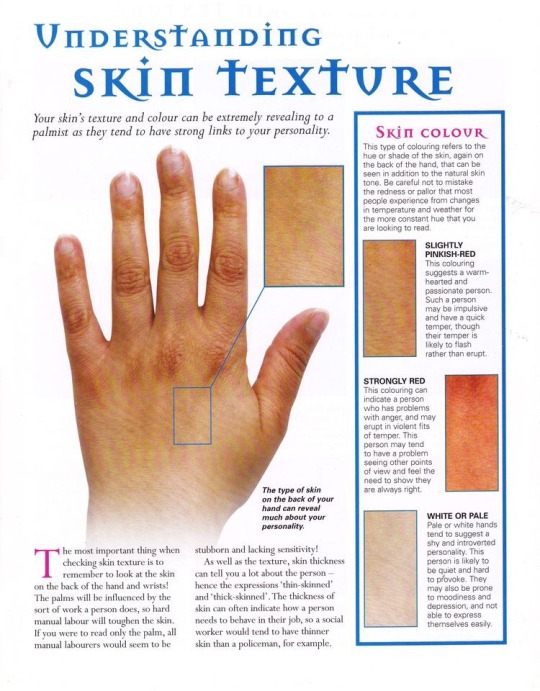
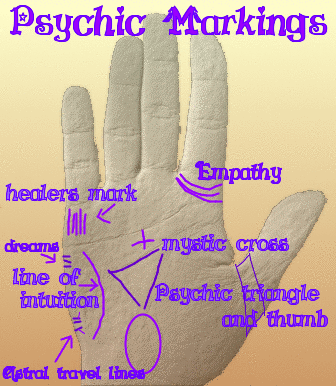
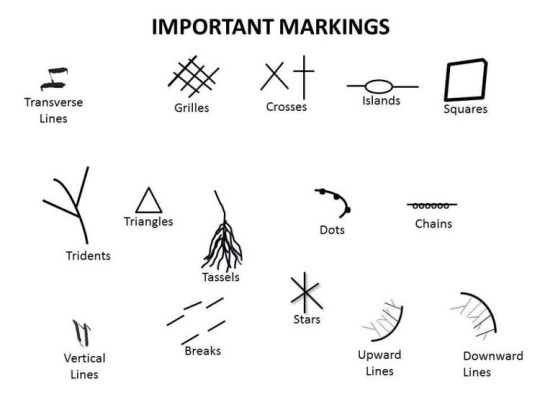
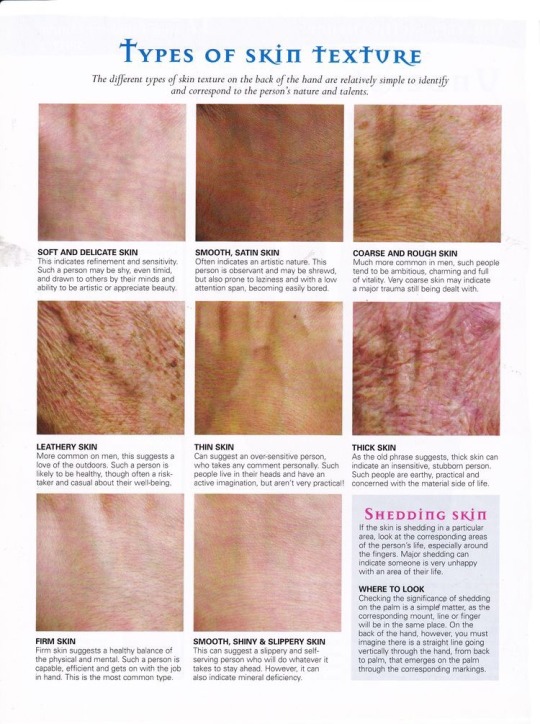



PALMISTRY THROUGH IMAGES BECAuse if you’re like me you learn better by looking at it than reading. Here’s the basics! Get to learning yourself and others!
14K notes
·
View notes
Text
Insect Magic
The Butterfly
Associations:
Element of air
Transformation
Regeneration
Souls of the Dead / Ancestors
Renewal
Use in your practice:
The butterfly can be an aid for love spells and dream work. It also helps when working with the fairy realm and contacting ancestors/spirits.
Use photos or drawing in spells or on your altar. Visualize during meditation.
The Bee
Associations:
Providing and nurturing
Abundance
Community
Fertility
Prosperity
Use in your practice:
The bee can help in spells that help attract prosperity, unify your family, strengthen bonds in a relationship. Etc.
Use photos or drawing in spells or on your altar. Visualize during meditation. Honey from bees is also a great offering.
The Spider
Associations:
Creativity
Renewal
Aggression
Wisdom
Use in your practice:
The spider is great when we need support with creativity and developing skills. Visualizing energy as a spider web - ideas, manifestations, outcomes all weaved together.
Use photos or drawing in spells or on your altar. Visualize during meditation.
The Dragonfly
Associations:
Element of water
Shape-shifting / Transformation
Change
Courage
Use in your practice:
Dragonflies are useful for dream work and meditation when seeking clarity/truth. Use in spells dealing with change our courage.
Use photos or drawing in spells or on your altar. Visualize during meditation.
The Firefly
Associations:
Element of fire
Happiness
Hope
Energy
Guidance
Use in your practice:
Great for spells involving removal of negativity/darkness. Adds energy/boost to spellwork. Call on the firefly to give you energy.
Use photos or drawing in spells or on your altar. Visualize during meditation.
The Moth
Associations:
The element of air
The moon
The soul
Seeking the truth
Balance
Use in your practice:
Great for use in divination, defense magic, lunar magic. Similar to the butterfly it is useful in ancestor work.
Use photos or drawing in spells or on your altar for esbats. Visualize during meditation.
The Cricket
Associations:
The home
Luck
Happiness
Security
Use in your practice:
The cricket is great in all hearth/home magic. Use in luck spells, communication spells, boost energy. Useful in rain work
Use photos or drawing in spells or on your altar. Visualize during meditation.
The Ladybug
Associations:
Luck
Happiness
Romance
Use in your practice:
Perfect for use in luck magic. Aids in romantic/love spells.
Use photos or drawing in spells or on your altar. Visualize during meditation.
(Source: ‘The Magic of Mundane Garden Creatures’ by Sandra Kynes -
Llewllyn’s 2018 Magical Almanac)
4K notes
·
View notes
Text
How To Stop Using Your Own Energy To Fuel Your Witchcraft

Do you ever feel like you have to wait to be in just the right state to do magic?
Maybe you’ve been told you shouldn’t do magic when you’re sick.
Or maybe you’ve just found that spells tend to flop when you’re tired or sad.
THE PROBLEM IS, FOR MANY OF US THIS CAN MAKE UP THE MAJORITY OF OUR LIVES!
From illnesses to working multiple jobs, raising kids or mental health struggles, life is messy and you just can’t maintain that optimal magic working state all the time.
This can be SO FRUSTRATING but today I’ve got a solution for you!
Now, sadly I can’t fix the parts of your life that drain you or wear you down. As much as I would love to have the ultimate answer to how to have that pinterest perfect life I am in the same boat as everyone else.
What I can do is show you how to work magic anyway.
You have to stop relying on your own energy. I know it sounds a little nuts, energy is literally what magic runs on and now I want you to just remove it from the equation?! What?
I promise I haven’t lost it and YES, that’s exactly what I want! Or at least I want you to make energy way less of a key player in your magic.
I want you to never have to worry about whether or not you have enough energy to work magic ever again.
This is all explained in detail, including energy work and getting past all of the things that are stopping your from practicing your craft, in my new program Old World Witchcraft.
You achieve this by using other sources of energy to fuel your work.
Pulling energy from other sources is a way to fuel spells when you’re low on energy yourself or you’re working on something very big that needs more than you can safely offer.
Basically what you’re doing is finding an alternative source of energy and channeling the energy you take from it into your work in much the same way you would channel your own energy into it. Instead of being the source of energy in this case you’re simply a conduit, connecting power source to magic and allowing the entire framework to run without needing your input, only your direction.
The first step in this process is finding a good source.
This source can be anything;
Plants
Animals
Crystals
People
The earth
The moon
etc.
It’s important to take into consideration that if you’re pulling from a living source you must ask permission first. It’s usually easiest to choose a source that you’re comfortable with, if you don’t work with plants much using plant energy in your magic is going to feel clunky and unwieldy, stick to what’s familiar.
Once you’ve found a source it’s time to connect your energy to it. If you’ve ever grounded and connected your energy to the earth it’s much the same. Take a deep breath, close your eyes and feel for the energy of your source. Visualize your energy and the sources energy connecting and mingling together.
Begin gently pulling the energy from your source into yourself, it might feel a little odd to do this so be careful during this process. Often pulling too much energy into yourself can cause some unpleasant symptoms such as lightheadedness, nausea, and giddiness. For this reason I suggest you have whatever you’re channeling the energy into at the ready so you can immediately pass the energy from the source, through yourself and into your spell.
You do NOT want to use yourself as a holding bay for that energy any more than you absolutely must.
It can take a bit of practice to get this technique down well enough to be used in spell work. I would suggest starting with training exercises to get comfortable before trying to use it for any big spell work.
As an example, you could try pulling energy from a plant or the earth and passing it into a stone or crystal and then back again. As you get more comfortable you can work up to transferring different energies and in greater quantities.
This technique can be used in a variety of ways, obviously, as I suggested, it’s good for adding a little extra power to your spells but it could also be used to store energy for later spells in crystals or tools. You could use it to heal yourself by channeling the energy into your own body where there are deficiencies causing pain or illness. You could even do this in reverse to deactivate a spell (it’s suggested that you not deactivate a spell by channeling into a living being, the earth is best in this case).
It’s always a good idea to thank whatever has leant its energy to you, fertilizing or watering a plant, cleansing a crystal, picking up litter for the earth, whatever you can manage to show your thanks and be respectful.
After using this technique it is always advised to finish by grounding yourself. Moving large amounts of energy can pull your own energy out of balance leaving you with too much or too little or even leaving residue of whatever you were moving stuck to your own energy. Plugging into the earth and allowing your energy to equalize and come back to a balanced state will prevent any negative side effects.
Do you have a better grasp on how to outsource your energy needs? I’d love to hear about it in the comments!
And if you want to know more about how to become a witch and work magic the smart way, go check out my program Old World Witchcraft!
15K notes
·
View notes
Text
Witch Tip:
When you’re stressed out and worrying, it can feel like any verification you do is wrong. What always helps me is sorting my tarot deck back into the correct order and entirely reshuffling. Breaking it into smaller pieces, sorting the cards, turning them, etc. Entirely shuffling right from the ‘fresh point’ of an in order deck. This way, you’ve calmed by focusing on organising it and then shuffling well again, and the cards had been able to get new placings away from your normal shuffling technique.
907 notes
·
View notes
Text
shout out to witches who use the “nasty” ingredients that cause other witches to say “im not one of THOSE witches”
shout out to the witches who use spiderwebs, dead insects, raw meat, and mud.
shout out to the witches who use blood, bones, chicken feet, and poisonous plants.
shout out to the witches who use dolls, fingernails, mold and drugs.
shout out to the witches who use sex magic, demon summoning, spirit work and cursing.
shout out to the witches who know how to stay safe while doing all of these things and have studied up on proper usage and sanitation methods.
shout out to the witches who are shamed for using things that were used in the “old days”
shout out to the witches who are shamed for doing the things their ancestors did to get by but have been called users of “black magic”
shout out to the witches who do what they fucking want and dont water down our craft to look better for others.
13K notes
·
View notes
Photo

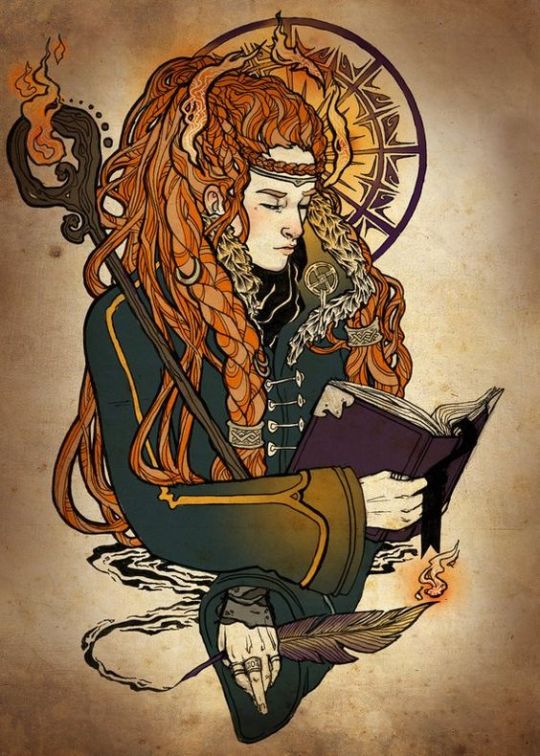
Brigid. Mother Goddess. Goddess of Hearth & Home
Artist: Helen Mask
3K notes
·
View notes
Text
Celtic Deities: The Dagda (Dagdha)
The Dagda, the High King of the Tuatha Dé Danann, is often likened to the Germanic God, Odin. Why? Because He is known also as Eochu or Eochaid Ollathair, which translate to “horseman, great father” or “all-father”.
The Dagda is shown to be a father-figure, chieftain and a druid, and he is oft associated with masculinity, fertility, agriculture, wisdom and magick. He is depicted as a very large man who dons a hooded cloak and carries with him a club named, “Lorg Mór” that is imbued with magick. “Lorg Mór” can kill instantly with one end, and give life to the dead with the other.
The Dagda also carries a cauldron known as the “coire ansic” that is never empty and a powerful magick harp known as “uaithne” that has the ability to control the emotions of man, and change the seasons.
Abode: Bru na Bóinne
Weapon: Lorg Mór (club)
Other Items: Uaithne (the harp) and coire ansic (cauldron)
Battles Fought: Cath Maige Tuired
Consort(s): Ethniu, The Morrígan, Boann
Parents: Elatha and Danu
Children: Óengus, Bodb Derg, Cermait, Midir, Brigid
2K notes
·
View notes